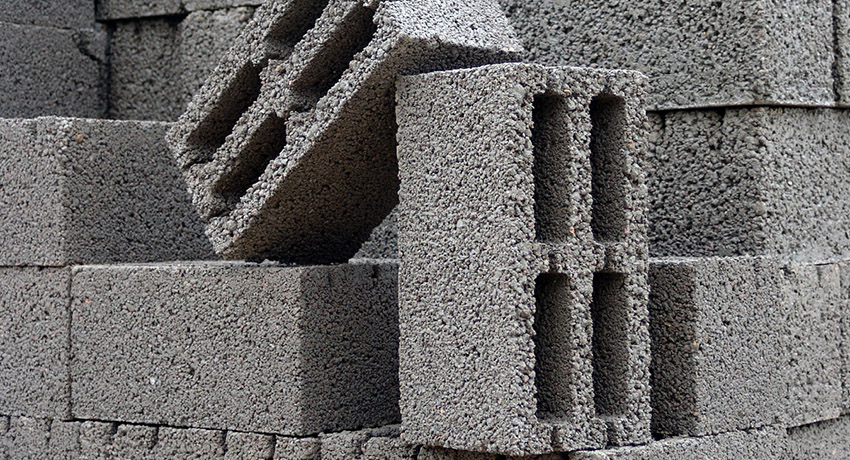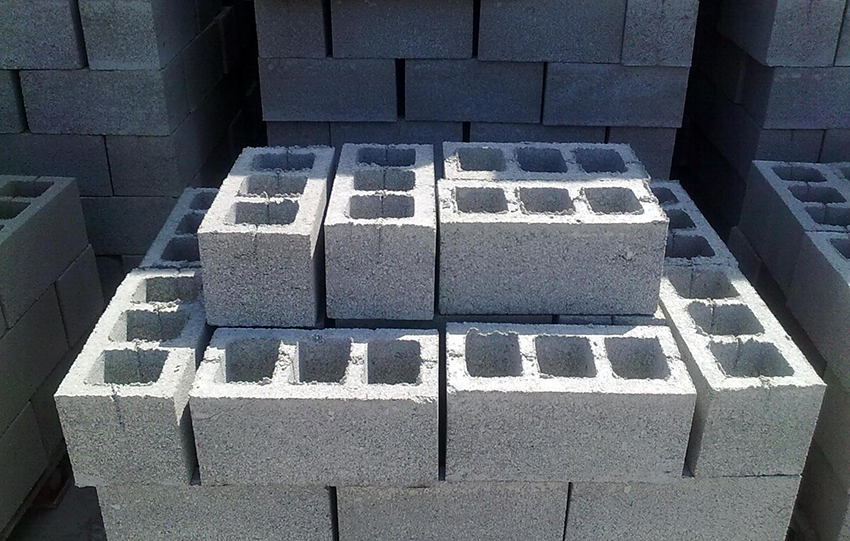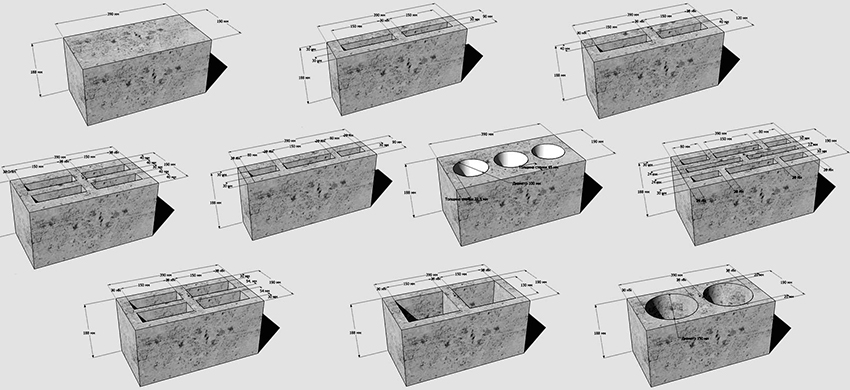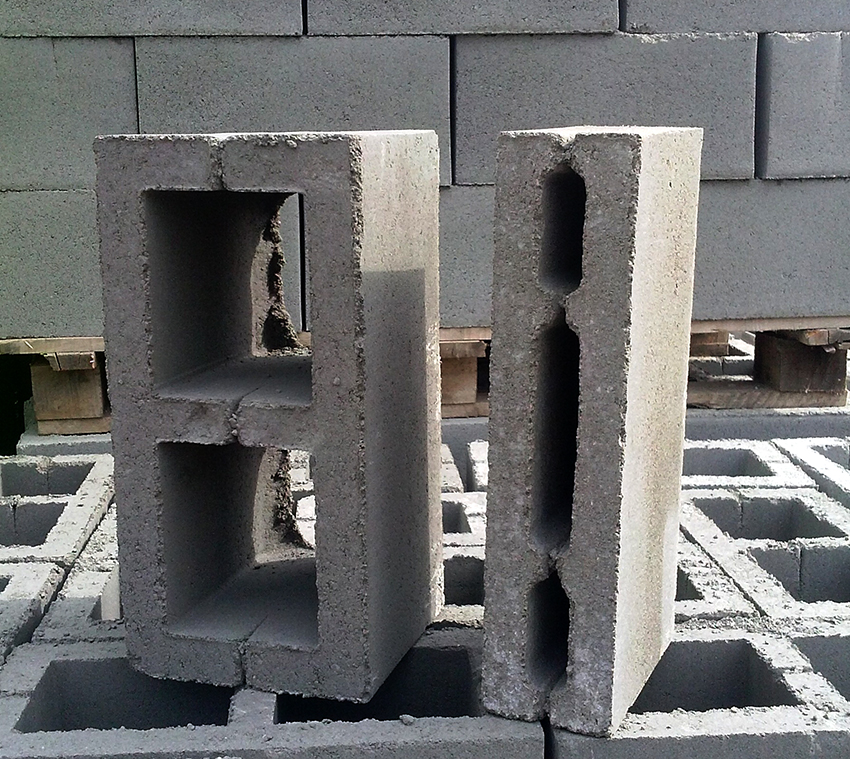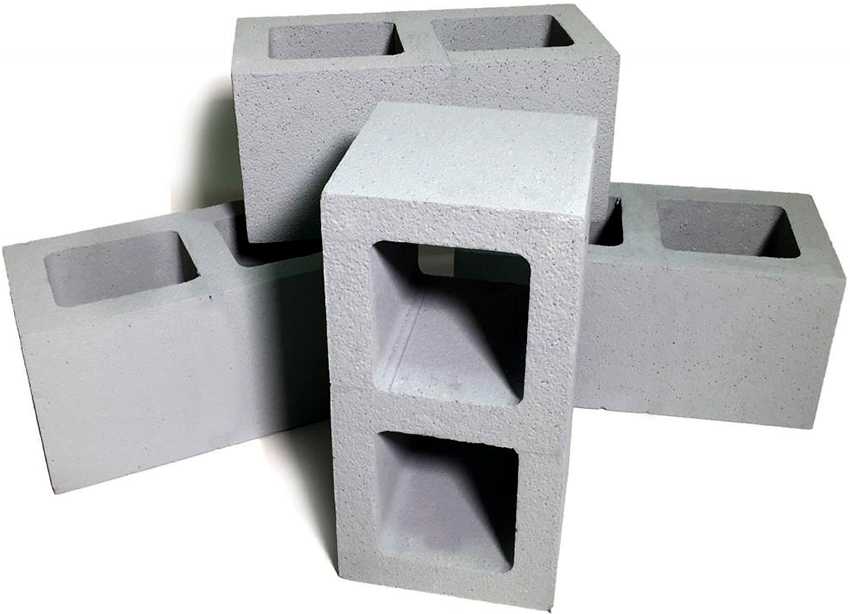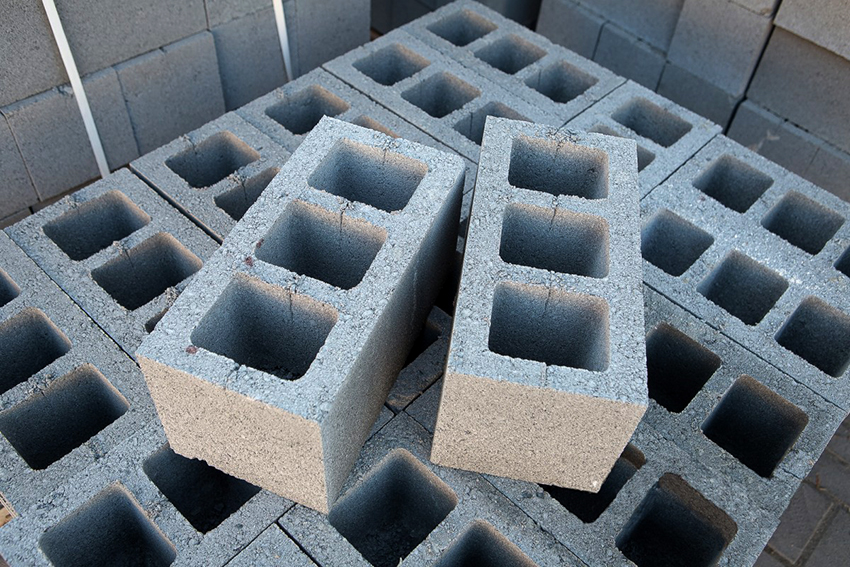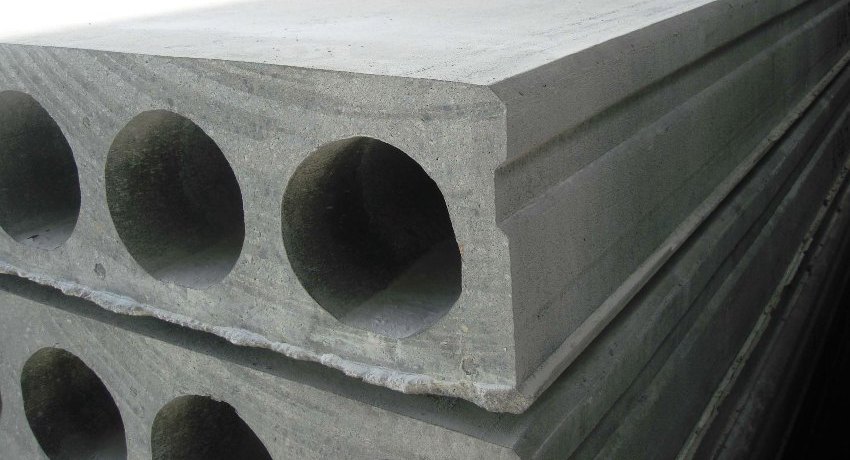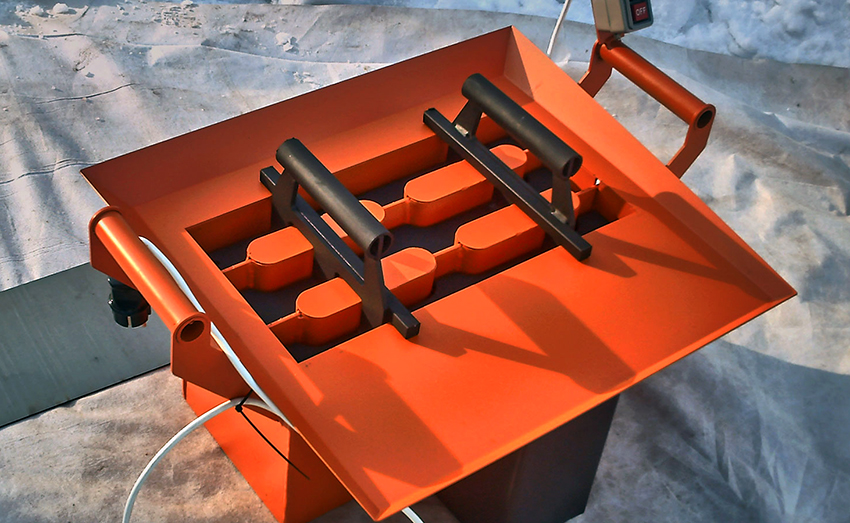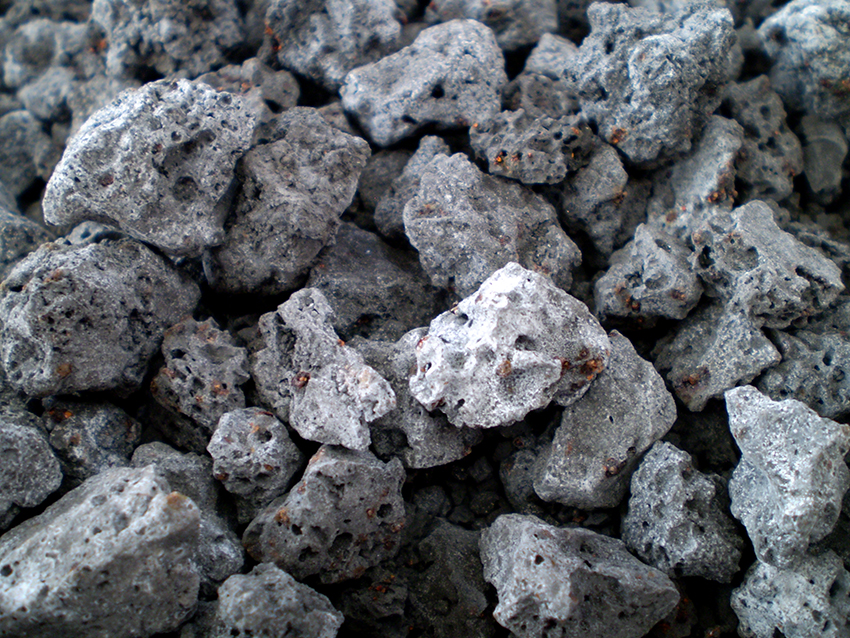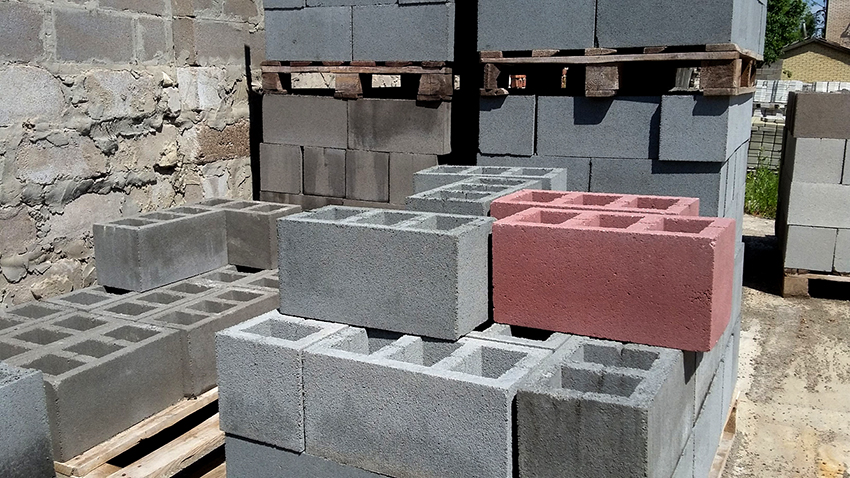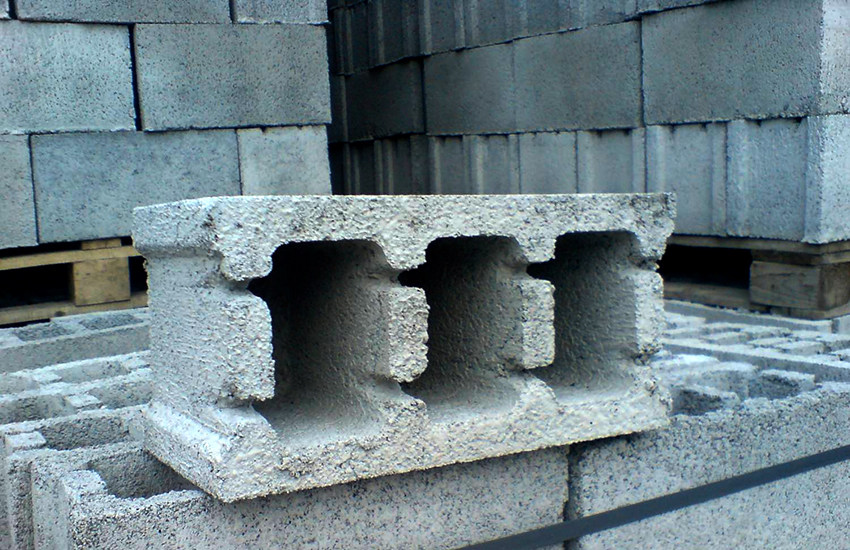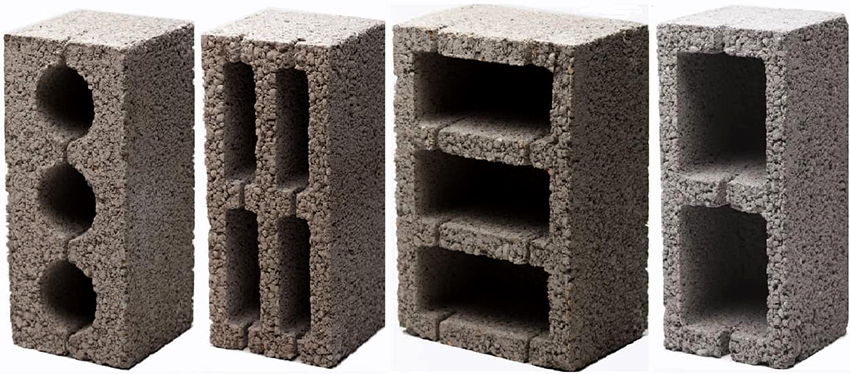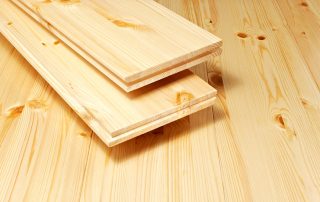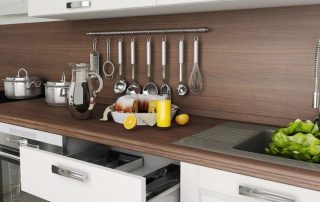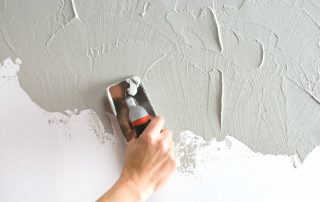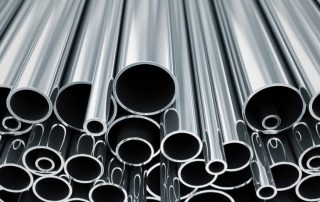Every real man must build his house in such a way that it is strong, reliable and stands for more than a dozen years. Therefore, the choice of materials for the walls is especially important, because this mistake is very difficult to fix after building a house. Building materials from different manufacturers differ from each other. Therefore, the size of cinder blocks, composition and other characteristics are important in the construction of a building. This is what will be discussed in this publication.
Content [Hide]
- 1 Dimensions of cinder blocks: composition and proportions of material
- 2 Standard sizes of cinder blocks: characteristics of the building material
- 3 Standard dimensions of a cinder-concrete block: height, width and length
- 4 Types of building materials: how much does the cinder block weigh
- 5 Sizes and prices of cinder blocks: the cost of various types of material
- 6 Cinder block size: standard and required amount for construction
- 7 How to make a cinder block of a standard size yourself
- 8 Features of the production and storage of cinder blocks: photo
- 9 Buying cinder blocks: price and product safety
Dimensions of cinder blocks: composition and proportions of material
Cinder block is a type of building stone that is widely used in the construction of modern premises. It is used to create load-bearing structures, interior partitions and lightweight foundations. Such blocks are used both in private and commercial buildings.
It should be noted that a wide variety of raw materials are used for the solution from which the cinder blocks are formed, therefore the composition of the cinder blocks does not have a strict recipe. Most often, a sand-cement mixture is used as a basis, which is subject to vibration compaction in special forms. As additional additives, various fillers and components are used that increase the quality, strength and frost resistance of the finished premises.
What is a cinder block made of? To create this building stone, a mixture of the following components is most often used:
- expanded clay stone;
- finely crushed bricks;
- sawdust;
- metal smelting waste - slag;
- perlite;
- gypsum;
- sand.
According to the production technology, the following proportion is usually used for the mixture: 9: 1 (nine parts of slag and one part of cement). Water for the solution is taken in a ratio of half of the total volume of all components. It should be noted that this is a standard technology and may differ from manufacturer to manufacturer, depending on the components used.
It is important! You need to know that cinder block walls in height should not exceed the third floor. For the construction of taller buildings, it is better to use combined masonry.
Standard sizes of cinder blocks: characteristics of the building material
After you have found out what cinder blocks are, it is important to understand the main characteristics of this material. The building stone, made in full compliance with standards and technological process, belongs to the category of lightweight concrete. Therefore, the characteristics of the cinder block are as follows:
- strength ranges from 25-150 kg / cm²;
- the average density is 1050-1200 kg / m³;
- frost resistance of the material - about 25 cycles;
- moisture absorption - up to 75%;
- the fire resistance of the stone reaches 800 ° C.
It should also be noted that this material has many advantages, among which the following stand out:
- Economic expediency. Cinder block is a relatively cheap material.
- Sufficient strength and durability of building stone for low-rise buildings.
- Light weight, which means less stress on the building foundation. Since the material is lightweight, you can easily carry out the necessary construction work with the efforts of one person.
- The material is not susceptible to attack by fungus or mold. The risk of infection by any microflora is zero.
- The cinder block is absolutely fire safe, since ignition is possible only in a blast furnace, and in an ordinary fire, the temperature does not reach such values.
- The building stone is very easy to make, so if you want it is easy to make it yourself.
It is possible to increase the thermal conductivity of the cinder block if, during construction, the voids of the material are filled with expanded clay or any other bulk insulation.
Like any building material, the cinder block has its drawbacks, in particular:
- When purchasing this stone, it is very important to check the quality certificates with the seller, as there is a possibility of buying material that does not meet environmental standards.
- During the creation of the material on your own, the parameters of the stone can differ significantly from the standard dimensions of the cinder block. And the cost of construction can increase due to the additional costs of external wall cladding.
- The walls are visually unattractive. But this problem can be easily solved with additional external cladding.
- If organic materials are used to make the cinder block, for example, sawdust, then the actual service life of the building will be lower than expected.
- The cinder block has a weak adhesion of stones to plaster and masonry mortars.
- The material is highly susceptible to moisture.
In order for the cinder block walls to serve for a long time, it is necessary to carry out external finishing. Often there are also problems with the interior decoration of premises, namely: the plaster falls off over time, and the wallpaper does not adhere well to the material due to the uneven surface of the walls.
It is interesting! There is an opinion among builders that a cinder block is not suitable for the construction of multi-storey buildings, but in some regions of the country there are five-story houses built successfully in the days of the Soviet Union.
Standard dimensions of a cinder-concrete block: height, width and length
Usually, cinder blocks of all varieties are produced in accordance with GOST, therefore their sizes are strictly defined. The following sizes are considered the generally accepted standard:
- length - 39 cm;
- width - 19 cm;
- height - 18.8 cm.
These characteristics are due to the fact that one cinder block is equal in volume to four bricks. This is very convenient as it simplifies the calculations during construction. But modern manufacturers also manufacture products of non-standard sizes - 40x20x20 and 39.5x19.5x19.5 cm. These building blocks are used for the construction of industrial facilities. The dimensions of the partition cinder block are 39x12x18.8 cm.
In order to determine how many blocks to buy, you can use the standard size cinder block calculator. It works very simply: you need to enter into a special form the parameters of the house, the number and dimensions of doors and windows, as well as the type of masonry - and in a few seconds you can get information about the required number of cinder blocks.
It is interesting! When calculating the cinder block, it should be remembered that this building material, like any stone, has zero shrinkage.
Types of building materials: how much does the cinder block weigh
The weight of the cinder block depends on the actual volume of the material. Recall that a building block can be solid or hollow. In the modern building materials market, there are three types of slag wall blocks, so we will consider each group in more detail:
- Solid block - characterized by the absence of voids. This increases the reliability and strength of the material, but due to this, the stone is much heavier in comparison with other types. These building blocks are most often used for the construction of load-bearing walls and building foundations. The weight of these structures varies in the range of 25-29 kg.
- Hollow stone - often used only for the construction of walls, including supporting structures. The weight of one cinder block is 12-23 kg.
- A semi-block is a material in which voids prevail, therefore the stone is used only to create interior partitions. The weight of such a cinder block is about 9-13 kg.
According to GOST 6433-99 "Concrete wall stones", the density of hollow blocks made of slag concrete mixture should not be higher than 1650 kg / m³, and solid structures - no more than 2200 kg / m³.
It is interesting! The weight of the building stone, in addition to the hollowness and density, is also influenced by the dimensions of the structure, therefore, a large-sized cinder block with dimensions of 20x20x40 cm will have the greatest mass.
Sizes and prices of cinder blocks: the cost of various types of material
The selected aggregate influences the main characteristics of cinder blocks. For this they use metallurgical waste, expanded clay crushed, glass and brick breakage, even ash. The price of the cinder block also depends on the materials used. Standard sizes, decorative effects, the number of grooves - all this affects how much a cinder block costs.
Strength and durability also depend on the size of the aggregate. The best solution is the use of fines raw materials. Such blocks are usually more expensive. If, however, carefully crushed waste is used as a filler, then the price will be more affordable.
In addition to solid blocks, manufacturers offer customers lighter hollow structures. As a result of pushing the technological cavities, it was possible to reduce the weight of the product. At the same time, the thermal conductivity of the cinder block masonry decreases. The number of holes and recesses in the block varies from 2 to 4, while their shape and placement options can be any.
The dimensions of the cinder block and the price per piece are interrelated. Increases the cost of stones and decorative effects on the side surface.
It is interesting! The high density and strength indicators of the cinder block directly depend on the used binder component - cement. Therefore, the higher the quality of the material, the higher the cost of the finished product.
Cinder block size: standard and required amount for construction
Knowing the height of the cinder block, as well as other standard material parameters, you can easily convert these values into m³. It is much more convenient to use this unit of measurement, since the amount of cinder block required for construction is usually calculated, in m³.
When starting construction work, it is extremely important to correctly and accurately determine the right amount of material. Since the standard parameters of cinder blocks differ from the sizes of the usual bricks, the calculations also take place according to a completely different scheme.
First of all, you need to know how many cinder blocks are in the cube. In order to calculate the volume of each unit, the width, height and length of the building material should be multiplied in cm. Further, 1 million cm³ must be divided by the resulting number. As a result, it will be possible to determine how many cinder blocks are in one cube. One m³ usually contains 72 standard cinder blocks.
Many people believe that one pallet of cinder-concrete blocks is equal to 1 m³. This is a misconception that often leads to errors during calculations. A standard pallet holds 60 stones, which is slightly less than 1 m³.
Calculation of the amount of material, dimensions of cinder blocks and prices
During construction it is important to know how many blocks are needed for 1 m². In these calculations, the wall thickness plays an important role. For example, for the construction of 1 m² of a wall, the thickness of which is equal to half of the whole block, you will need 13.6 pieces. If the wall is formed into a whole block, the amount of material should be doubled, that is, 27.2 stones will be needed. It should be borne in mind that in practice fewer blocks are required, since the thickness of the mortar joint is not taken into account during the calculations.
Related article:
Sizes of floor slabs: features of the use of structures
The main types and technical characteristics of products. What can you learn from the marking. The main advantages and disadvantages of designs.
As for the cost, the most expensive are the basement and foundation blocks M100-125. Wall and partition stones M50-75 are slightly cheaper. Thermal insulation products are budgetary, but their strength is low - M35.
Table of sizes and prices for cinder blocks of different types and brands:
| View | Size, cm | Brand | price, rub. per piece |
| Corpulent | 40x20x20 | M50 M75 M100 |
27 30 34 |
| Full-bodied with expanded clay | 39x19x19 39x9x19 |
M75 M50 |
43 27 |
| Double-hollow | 38.8x19x18.8 | M75 | 35 |
| Three-hollow | 39x19x18.8 | M50 | 31 |
| Four-hollow | 39x19x18.8 | M75 | 28 |
| Partition hollow | 39x12x19 39x9x18.8 |
M75 M50 |
26 17 |
| Decorative | 39x19x18.8 | M75 | 65 |
It should be noted that the price is approximate, since how much one cinder block costs is influenced by a lot of factors, including the manufacturer, and the cost of a claydite concrete block is twice as high as the price of a cinder block.
Useful advice! Most suppliers and manufacturers can offer a good discount to buyers of large quantities - about 15-20%. It all depends on how many cubic meters are purchased.
How to make a cinder block of a standard size yourself
Cinder block is the most demanded building material used for the construction of low-rise structures. This stone is notable for its availability, low cost and the possibility of self-production.
You can find a lot of information on how to make a cinder block with your own hands at home. And the first thing to start with is to knead the solution for the production of stone. The name of the material suggests that the basis is the slag obtained in a blast furnace as a result of ore remelting. This material must first be sieved with a special sieve.
Before making a cinder block, you need to prepare a special mixture. For the solution, you will need seven parts of filler, two parts of gravel (it is better to take material with a fraction of 5-15 mm), one and a half parts of cement and three parts of water. Slag in solution can be replaced with expanded clay, clay, sand, crushed stone or gypsum.
It should be noted that in the event that blast-furnace slag is selected as a filler, then the use of other additives is strictly prohibited.To get a beautiful colored stone, you can add chalk or red bricks, crushed into chips, to the mixture.
If you plan to independently establish the process of making cinder blocks, it should be remembered that there is no universal recipe for a solution. After all, each master, relying on his experience, creates his own unique formula. For beginners in the construction business, it is better to use the standard option.
How to make a cinder block at home? There are several ways:
- with the help of formwork, that is, it is necessary to make a special shape from boards or steel sheets;
- using a special machine.
Useful advice! In the process of home making cinder blocks, you need to ensure that the solution does not spread. To obtain durable stones from a slag concrete mixture, you need to add a plasticizer. In this case, the blocks will turn out to be not only strong, but also frost-resistant, as well as waterproof.
Features of the production and storage of cinder blocks: photo
How to make a cinder block with your own hands reliable and strong? To do this, you need to know a few secrets. Drying of products plays an important role. Any indentation or unevenness can ruin the building material. In addition, a large number of irregularities, gouges and imperfections will increase the cost of finishing the constructed walls. Therefore, in order for the structure to turn out smooth, the selected shape should be filled to the brim.
In order for the quality characteristics of a homemade cinder block to be at the highest level, do not forget to introduce a plasticizer into the solution. It needs to be added about 5 g per cinder block. This will protect the structure from possible damage, as well as increase the strength and frost resistance of the product. For the construction of a small building, you can knead the solution for blocks manually, but a concrete mixer will greatly simplify the matter.
Before preparing the solution (5-6 hours before), it is necessary to moisten the slag. This will make it possible to better connect the cement grains and filler particles.
It is better to store the resulting cinder blocks in stacks, one hundred pieces each. Moreover, they fit with small intervals. You can start building after several months, necessary to dry the material.
Useful advice! If wooden or metal molds are used without vibration, the prepared mixture should be slightly watery.
Buying cinder blocks: price and product safety
Cinder block is a very popular material. This is due to the numerous advantages of the material, namely:
- strength;
- ease of manufacture;
- resistance to weather conditions;
- long service life;
- high speed of installation;
- low cost.
If you compare how much a cinder block and a brick cost, you can see that the cost of the former is much lower. This is due to the simple manufacturing technology and low cost of materials. Typically, cinder blocks are produced from smelter waste, so there is a possibility of the presence of harmful ingredients that exceed the norm. Also, this material perfectly absorbs moisture, thereby releasing toxic substances that can adversely affect the human body.
The high concentration of harmful components is associated with the type of slag that is used for the manufacture of cinder blocks. The best and most harmless is the waste obtained after the processing of iron ore in a blast furnace. But the problem remains, since even clean slag that does not have harmful impurities emits a natural background radiation and releases radioactive particles.
In order to minimize the risk associated with the use of materials made from metallurgical waste in construction, the following conditions must be met:
- Require a quality certificate, especially if the purchase is not made in specialized stores. This is not a 100% guarantee of protection, since you can get the coveted form from the SES even for not quite safe material.
- Possible risks can be completely eliminated if the material is kept in the open air for 3 years. Therefore, you should inquire about the production date, which should be indicated in the certificate, or independently withstand the material for the required time in the open air.
- In addition, closing the wall with waterproofing and brick cladding will help protect against the harmful effects of slag. Inside the room is also meant finishing the walls.
- The ideal option that will orient the buyer regarding a specific batch of material is analyzes in construction research institutes or laboratories. To do this, it is enough to break off a small sample piece. There is no need to carry the entire block.
Cinder block is a type of building stone. In the process of its production, a method of pressing in a special form is used. The composition of the solution includes slag, although for modern materials this name is a convention. According to GOST, expanded clay, sand, volcanic ash, granite rubble, river gravel, broken brick, glass or concrete mass can be added to the solution. Standard cinder block size and price may vary. Usually the parameters of the block are 39x19x18.8 cm, although this is all individual, since it is easy to make such a building material at home. What size cinder block to choose depends on the type of building.
